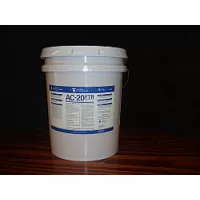Pecora AVB Sealant: Silicone Transition
$29.60
- Color: Black
- Tack free time: 50 minutes
- Primerless adhesion to difficult to adhere to weather resistant barriers.
- Excellent weatherability: Because of its 100% silicone composition, it is virtually unaffected by UV, precipitation, ozone, and temperature extremes.
- Resilient: Will remain flexible under extreme temperature conditions.
- Superior green strength.
- Compatible with natural stones and other porous surfaces susceptible to staining or silicone fluid migration
Out of stock
Pecora AVB Sealant: Silicone Transition
Pecora AVB Sealant is a single component; 100% silicone sealant designed to adhere to low surface energy materials utilized in traditional and novel air and vapor barriers. Pecora AVB sealant is designed as an integral component for transition seals between dissimilar materials in air and vapor barrier systems.
Surface Preparation:
Clean all surfaces by removal of foreign matter and contaminants such as oil, dust, grease, frost, water, surface dirt, old sealants or glazing compounds and any protective coating.
Porous substrates and precast concrete panels using form release agents other than polyethylene film should be cleaned by grinding, saw cutting, blast cleaning (water or sand), mechanical abrading or a combination of these methods which will provide a sound, clean and dry surface for sealant application. Dust, loose particles, etc. should be blown out of joints with oil-free compressed air or vacuum cleaned. Metal, glass and plastic surfaces should be cleaned by solvent procedure or by mechanical means. Soap or detergent and water cleaning treatments are not recommended. Cleaning of all surfaces should be done on the same day on which the sealant is applied.
Transition Seals:
Care should be taken to avoid sealant application to adjacent surfaces. Sealant should be applied in a continuous operation using sufficient material to ensure continuous air seal and adhesive performance. A minimum 3/8” bond line is
recommended to achieve sufficient bonding and air barrier performance. Apply sufficient uniform pressure to ensure contact to all surfaces to be joined.
Joint Applications:
A thin bead of silicone will accommodate more movement than a
thick bead. The bead should be no thicker than 3/8″ (9 mm) and no thinner than 1/8″ (3 mm) for joints where excessive movement is expected. Ideally, the ratio of joint width to the sealant depth should be about 2:1 when appropriate. Lap sheer joints should have a bead width which is equal to or greater than the total anticipated movement. Small curtainwall panels and lites should allow a minimum width of 1/4″ (6 mm) for the sealant bead. Larger panels for which a great deal of movement is expected should allow a minimum width of 1/2″ (12 mm) for the sealant bead. Glazing of plastic lites and panels fabricated from plastic require larger than usual joint dimensions due to the high coefficients of thermal expansion/contraction.
Tool Time:
(Initial skin): 25-35 minutes at 77°F (25°C), 50% humidity. Higher temperatures and/or humidity will shorten this time.
Cleaning:
Immediately remove all excess sealant and smears adjacent to joints with
mineral spirits. Also use mineral spirits for removing uncured sealant from equipment. Remove cured sealant by scraping, sandpapering, etc. (Caution: mineral spirits is flammable and toxic. Observe manufacturer’s precautions.)
Questions? Contact us!
| Weight | 2 lbs |
|---|---|
| Dimensions | 12 × 3 × 3 in |
Related products
Multi component
Concrete
Aluminum

















